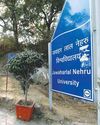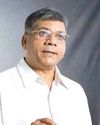Can you imagine a day without cash?

The answer is an obvious ‘no’. The rustle of notes and jingle of coins still have the power to light up any face. In fact, more than 99 percent of transactions by volume are still in cash payments in India, according to a McKinsey Global Insights report. Some argue that this overdependence on physical money is due to challenges like inaccessible banking services, lack of infrastructure to support non-cash payment and internet connectivity, which continue to persist, especially in the rural and remote regions of India. Others say that Indians are simply cash-obsessed.
But this obsession is costing a fortune to the economy. The Reserve Bank of India (RBI) and commercial banks annually spend ₹21,000 crore ($3.5 billion) to print and circulate currency notes and coins, and to keep them safe. Citizens of Delhi alone spend ₹9.1 crore – and 60 lakh hours – to withdraw and manage cash, according to a 2015 report by the Institute for Business in the Global Context.
"If you follow the traditional process of creating brick-and-mortar [bank] branches, giving credit, deputing officials, that's a very tardy process and the cost of transaction will be very high. Digital transactions can help in radically reducing the cost of transactions,” suggested Amitabh Kant, CEO, NITI Aayog, at the Digital Payments conference organised by Observer Research Foundation (ORF) in early October.
Cash, however, is slowly but surely going out of fashion thanks to technology. It started with credit and debit cards (plastic money), and with the rise of information and communication technologies, soon there were many more options to replace notes and coins: internet banking, mobile banking and digital wallets.
هذه القصة مأخوذة من طبعة October 16 2016 من GovernanceNow.
ابدأ النسخة التجريبية المجانية من Magzter GOLD لمدة 7 أيام للوصول إلى آلاف القصص المتميزة المنسقة وأكثر من 9,000 مجلة وصحيفة.
بالفعل مشترك ? تسجيل الدخول
هذه القصة مأخوذة من طبعة October 16 2016 من GovernanceNow.
ابدأ النسخة التجريبية المجانية من Magzter GOLD لمدة 7 أيام للوصول إلى آلاف القصص المتميزة المنسقة وأكثر من 9,000 مجلة وصحيفة.
بالفعل مشترك? تسجيل الدخول

the trump phenomenon
how the 2016 election exposed the us underbelly.

chinnamma is not amma
sasikala may have become the leader of the aiadmk, but she is a far cry from j jayalalithaa, who towered over tamil nadu politics like a colossus.

sakshi malik
sakshi malik is the first indian female wrestler to bag an olympic medal. the 24-year-old comes from mokhra village of rohtak, haryana. she came into the limelight as an international wrestler after she won bronze in the junior world championship in 2010. then, she went on to win silver in the commonwealth games in 2014 and a bronze at the asian wrestling championships in 2015. after rio olympics, malik was conferred india’s highest sporting honour – the rajiv gandhi khel ratna. she is also the brand ambassador of the beti bachao, beti padhao campaign in haryana.

Across The Threshold
A social media campaign aims to bridge gaps between communities by urging people to visit ‘people unlike us’

'How Can An Insurance Firm Promote Death?'
Dr Pankaj Chaturvedi, head and neck cancer surgeon at the Tata Memorial hospital in Mumbai, is a leading antitobacco activist. He joined hands with Sumitra Hooda Pednekar and others to file a PIL in the Bombay high court earlier this year, questioning the staterun insurance firm LIC’s investments in a leading cigarette-maker company. Edited excerpts from an interview with Geetanjali Minhas:

The Wolf And The Lamb
Social injustice and the fate of the university

"Young Dalit Leaders Have Age, Situation On Their Side"
How do you see the rise of the Bhim Army in Uttar Pradesh?During the last assembly elections in UP, it was a common consensus among many [dalit leaders] that we’d give one more chance to Mayawati.

Timely Delivery
A veteran bureaucrat explains how to complete government projects without time and cost overruns.

Cauvery Water Dispute
India’s leading water expert and president of the South Asia Consortium for Inter disciplinary Water Resources Studies, S Janakarajan, wonders why Chennai, a city that receives 1,250 mm rainfall, is called a thirsty city and goes on to explain to Shivani Chaturvedi what went wrong among the southern states that led to a water-war like situation. But, he warns that such a scenario will keep occurring if the government does not come up with a lasting solution.

Case Against Cash
Can you imagine a day without cash?